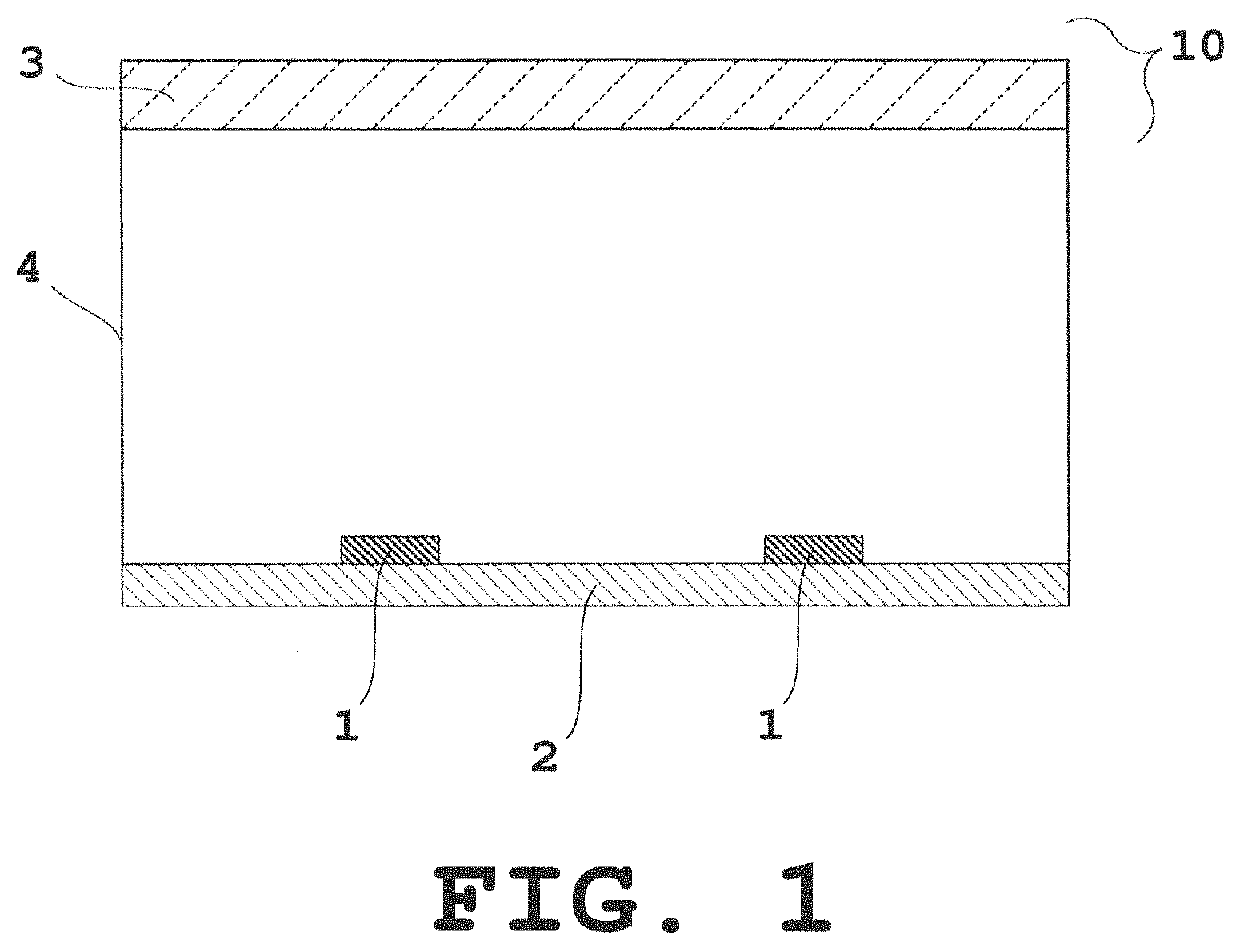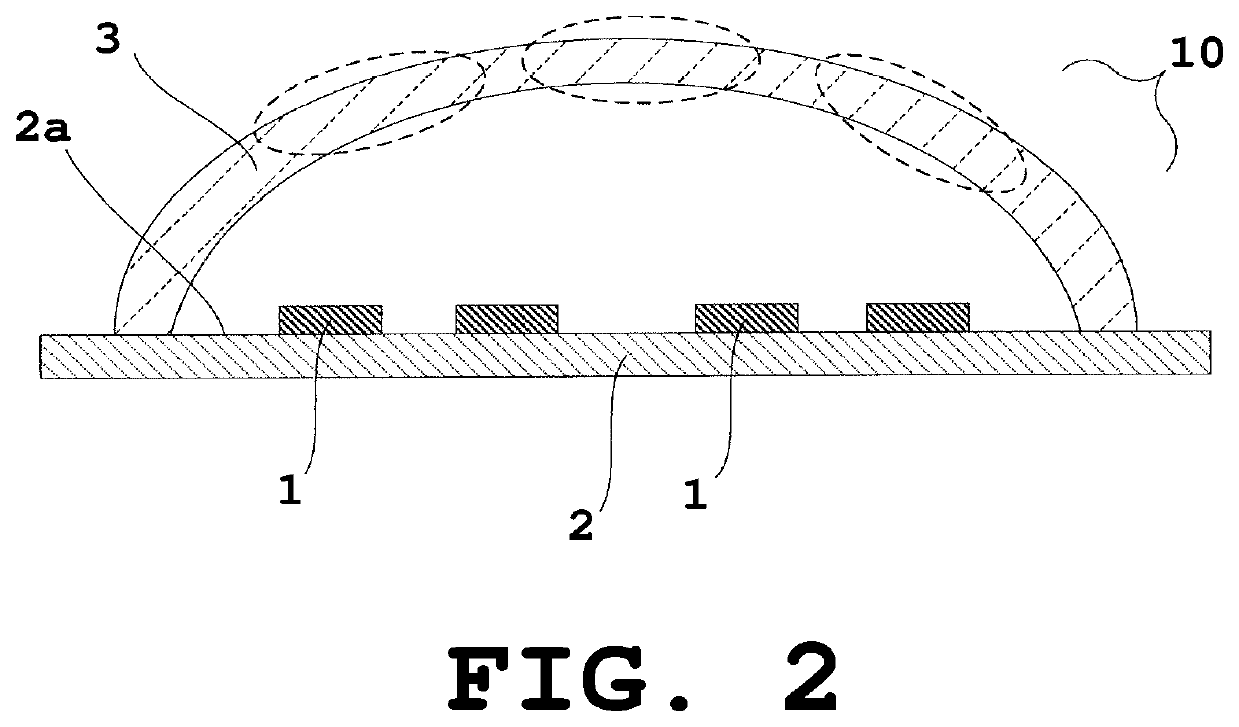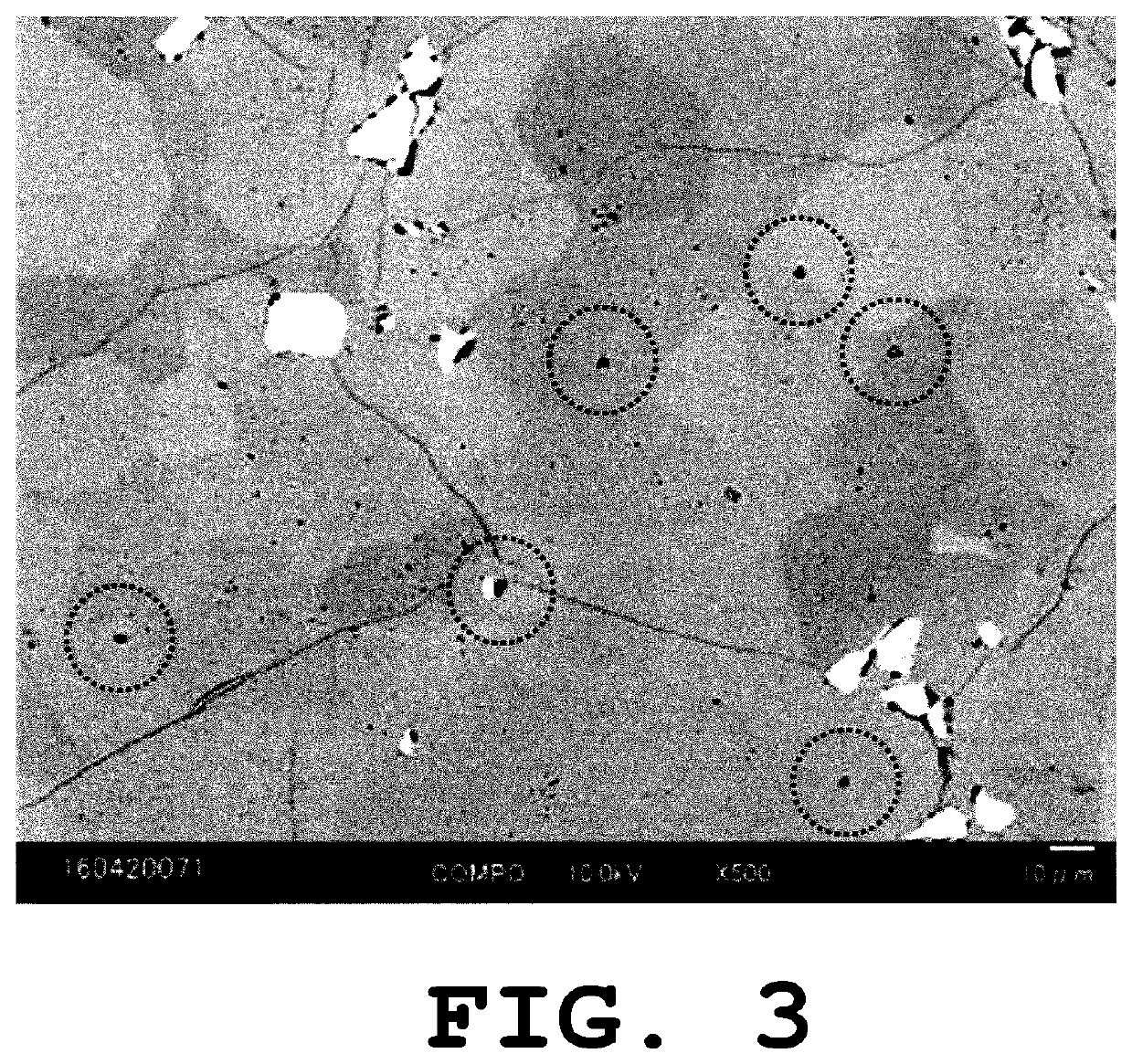Sintered phosphor-composite, light-emitting device, lighting device and vehicle indicator lamp
a technology of phosphor-composite and light-emitting devices, which is applied in semiconductor devices, light-emitting sources, lighting and heating apparatus, etc., can solve the problems of insufficient durability, heat resistance, and luminescence intensities of wavelength conversion light-emitting layers comprising dispersion in organic binders such as epoxy resins or silicone resins, and achieve high internal quantum efficiency and high transmittance
- Summary
- Abstract
- Description
- Claims
- Application Information
AI Technical Summary
Benefits of technology
Problems solved by technology
Method used
Image
Examples
examples
[0395]Specific modes of the present invention are described below in more detail by way of Examples, but the present invention is not limited by these examples.
first embodiment
[Measurement Method]
[0396]The degree of sintering, the absorbance, the transmittance, the internal quantum efficiency, the number of voids, the void area fraction, the carbon and oxygen contents, and the optical properties in the present description were measured as follows.
[0397](Degree of Sintering)
[0398]The degree of sintering was calculated by dividing the density of the sintered phosphor-composite measured by the Archimedes method ρa by the theoretical density ρtheoretical.
Degree of sintering (%)=(ρa / ρtheoretical)×100
[0399](Voids)
[0400]By subjecting the sintered phosphor-composite to a cross-section cutting process, observing the cross-section with a scanning electron microscope (SEM), and then subjecting the obtained image to a binary processing, the number of voids and the void area fraction were measured. More specifically, the cross-section was observed at a magnification of 100, and then a typical area was selected, followed by measurement at a magnification of 500. In the...
example 1-1
[0413]As a fluoride inorganic binder material for the sintered phosphor-composite, 2.0 g of CaF2 powder (Hakushin Chemical Laboratory Co., Ltd.; microparticles of not more than 1 μm) was used, and, as a phosphor, an LSN phosphor (LaSi6N11:Ce) BY-201 / G (manufactured by Mitsubishi Chemical Corporation) was used in an amount in which the phosphor concentration in the sintered body became 5% by volume. These were mixed together in a mortar. The resulting powder was dry-blended for 2 hours by rotation on a ball mill stand without balls, and then provided as a sintering raw material.
[0414]After placing 2.0 g of the raw material in a single-screw press die comprising an upper punch, a lower punch, and a cylindrical die (made of stainless steel, 20-mm diameter), a pressure was applied at 10 ton, and then the pressure was kept for 5 min to obtain a pellet having a diameter of 20 mm and a thickness of 3 mm.
[0415]The obtained pellet was vacuum-laminated, and then introduced into a cold isostat...
PUM
| Property | Measurement | Unit |
|---|---|---|
| area | aaaaa | aaaaa |
| volume fraction | aaaaa | aaaaa |
| area fraction | aaaaa | aaaaa |
Abstract
Description
Claims
Application Information
 Login to View More
Login to View More - R&D
- Intellectual Property
- Life Sciences
- Materials
- Tech Scout
- Unparalleled Data Quality
- Higher Quality Content
- 60% Fewer Hallucinations
Browse by: Latest US Patents, China's latest patents, Technical Efficacy Thesaurus, Application Domain, Technology Topic, Popular Technical Reports.
© 2025 PatSnap. All rights reserved.Legal|Privacy policy|Modern Slavery Act Transparency Statement|Sitemap|About US| Contact US: help@patsnap.com



